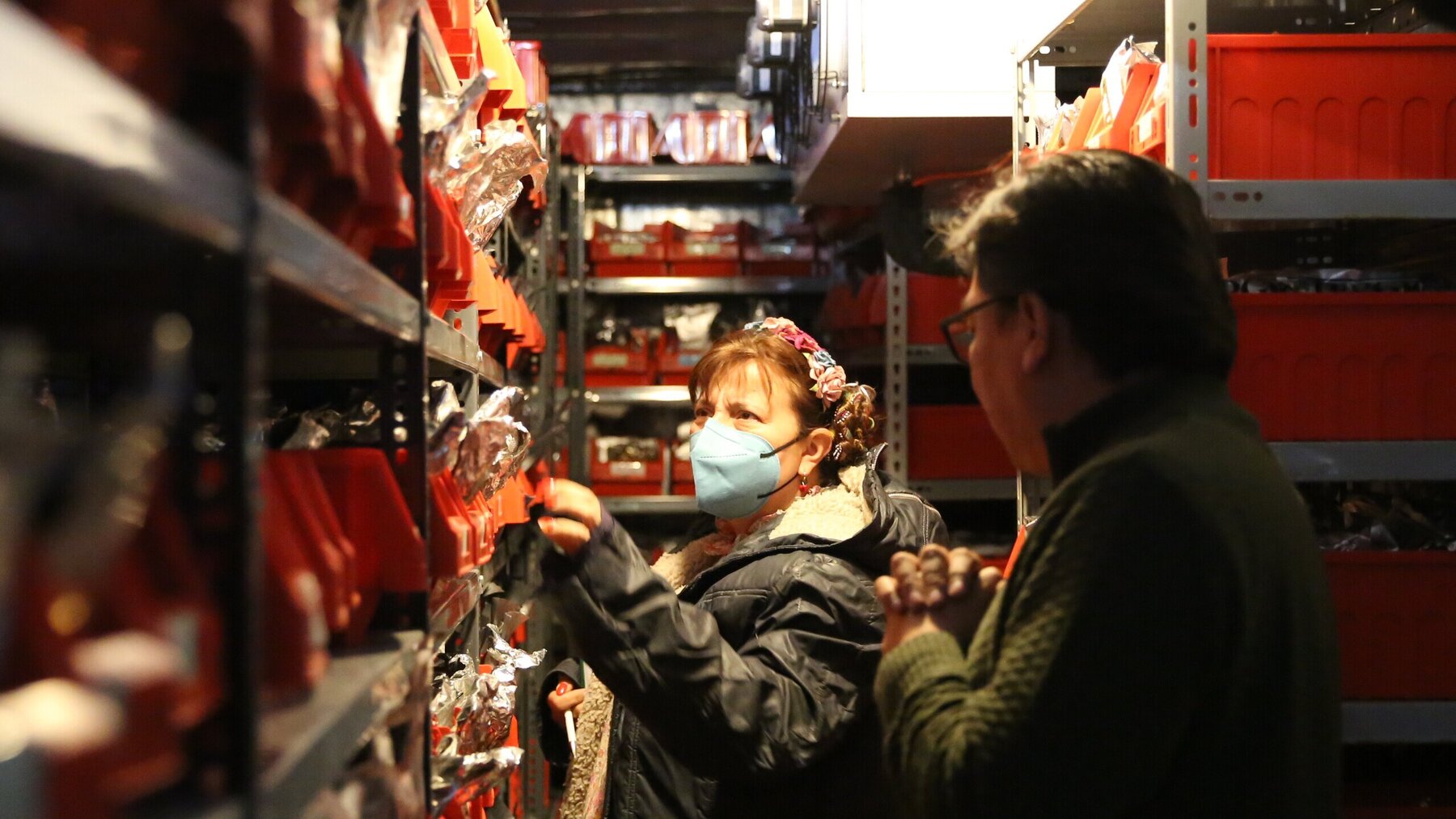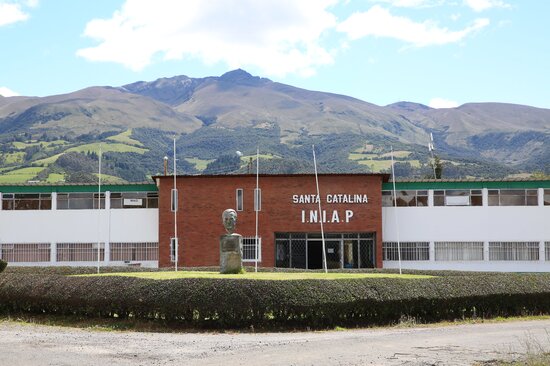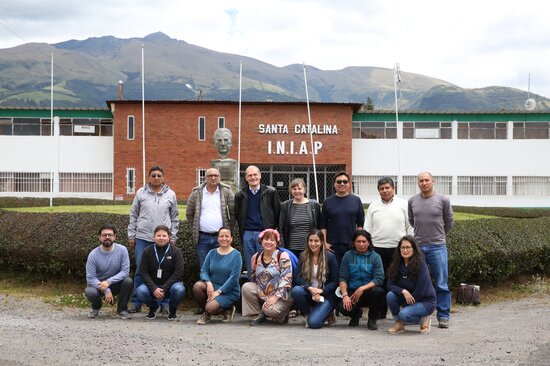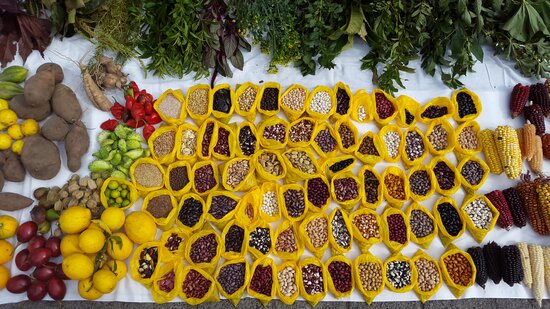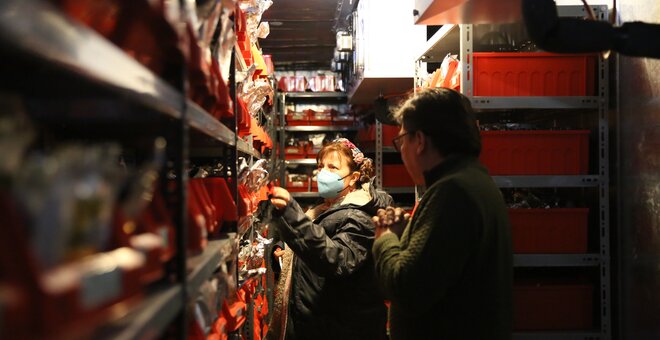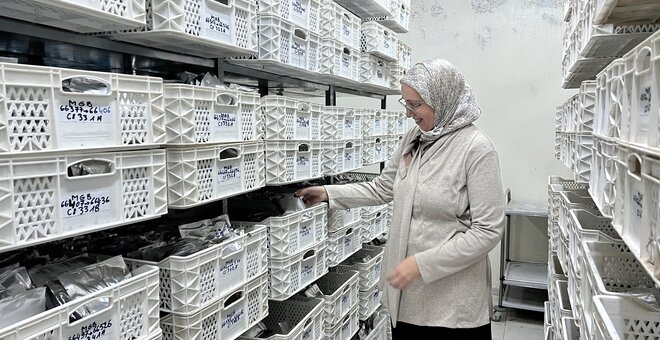Ecuador: Banco de Germoplasma del INIAP
Location
Estación Experimental Santa Catalina, cantón Mejía, provincia de Pichincha
Parent Organization
Instituto Nacional de Investigaciones Agropecuarias (INIAP)
Mission
- Conserve the agrobiodiversity of native crops and their related wild species, through ex situ and in situ techniques (on farm)
- Characterize and evaluate the different collections of germplasm in ex situ and in situ conditions (on farm)
- Document information from studies of germplasm collections on station and on farm
- Promote the sustainable use of conserved genetic wealth
- Participate in developing and implementing agrobiodiversity policies and act as the focal point for the Commission on Genetic Resources and the International Treaty on Plant Genetic Resources for Food and Agriculture.
Date Established
1980
Number of Samples Conserved
29,092 (as at June 2023)
Main Crops Conserved
- Cereal crops, including maize, barley and wheat
- Roots and tubers, including potato, sweetpotato, cassava and yam
- Andean grains, such as quinoa and amaranth
- Grain legumes, including chickpea, common bean, lentil, lupin and pea
- Forage legumes and grasses
- Fruit trees, including citrus
- Banana
- Sunflower
Background
INIAP established a formal genetic resources department in 1980. The national genebank currently falls under the National Department of Plant Genetic Resources (Departamento Nacional de Recursos Fitogenéticos, DENAREF).
DENAREF has genetic resources units at experimental stations in three regions of the country: Sierra, Costa and Amazonia. The main genebank is based at the Santa Catalina research station in the Sierra region. The activities of these units are aimed at the conservation and use of agrobiodiversity specific to their regions, including collection of germplasm and ex situ and in situ conservation. The experiment stations also have responsibility for crop breeding, ensuring close links between the breeding work and genetic conservation.
- Passport data for more than 5,000 accessions of maize, beans, potato, sweetpotato and cassava is available in Genesys.
- In Amazonia, DENAREF has been responding to the demand for fruit and exotic trees with a production of 2,000-5,000 plants/year of 6 to 8 species to restore native varieties to diversify traditional agroforestry systems.
The Collection
Ecuador is one of the most biodiverse countries in the world, and this is reflected in the diversity of the genebank collections which comprise more than 500 species of cultivated plants and their wild relatives.
Sixty percent of the collection is stored as seed samples, 36% as accessions in field genebanks and 4% is stored in in vitro culture.
The seed genebank has two storage units, one for long-term storage at −15° C and one for medium-term storage at −10° C. Seed is dried to 3–7% moisture content before being sealed in laminated aluminum foil packets.
In vitro culture is used for slow-growth conservation of clonally propagated crops, including potato, Andean roots and tubers, sweetpotato and tree tomato, and as backup for collections held in the field genebanks.
A wide range of clonally propagated crops are kept in field genebanks in the three regions, including Andean roots and tubers and medicinal plants at the Santa Catalina research station, and cacao, coffee and tropical fruits at several stations.
Stories on Ecuador
Strengthening Genebanks in Ecuador and Peru
A team of experts traveled to Ecuador and Peru to review the national genebanks in a visit organized by the Crop Trust under the Biodiversity for Opportunities, Livelihoods and Development (BOLD) Project.
Ecuador and Peru are...
11 Aug 2022
Support for National Genebanks Underway
Seeds maintained in genebanks worldwide are the foundation of our future food and nutrition security.
16 Jun 2022

